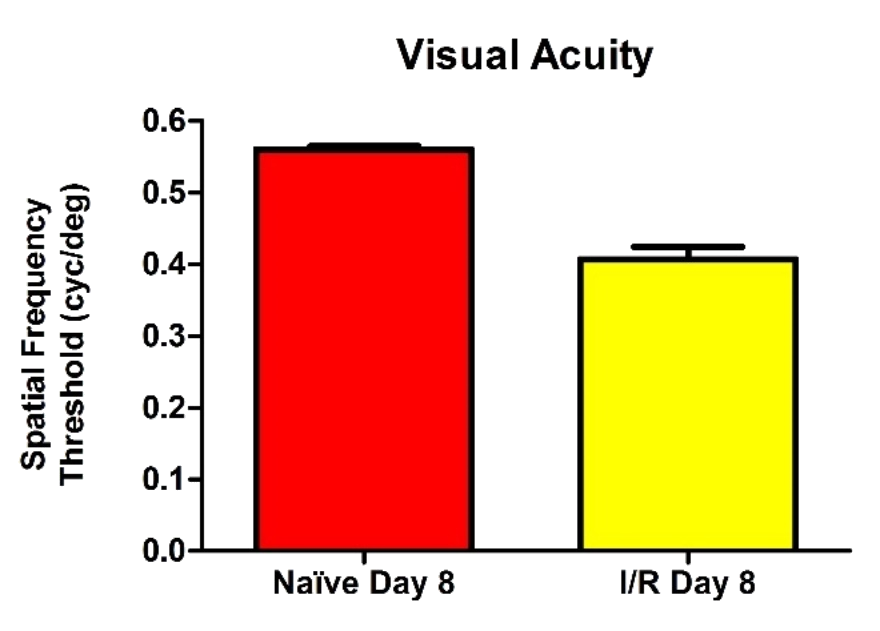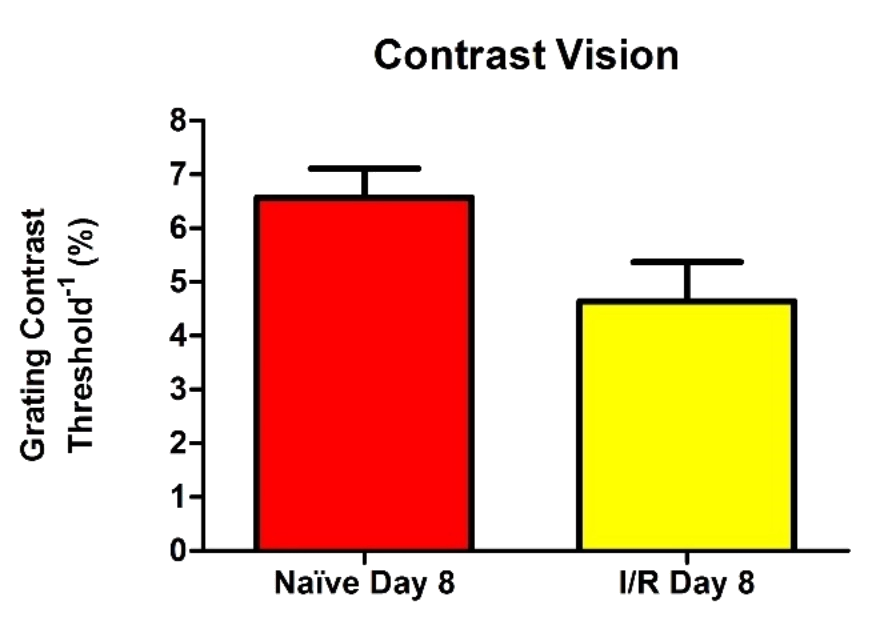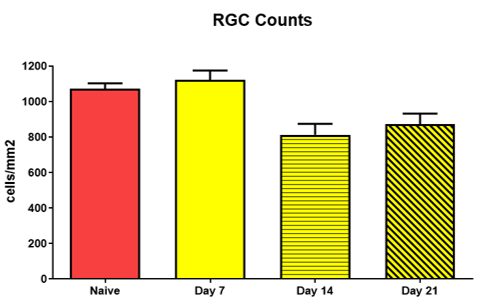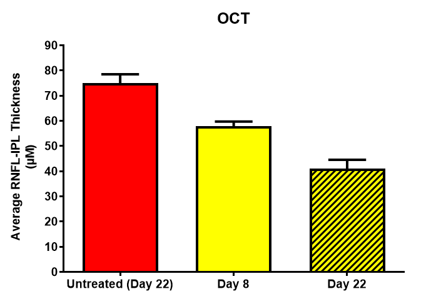Ischemia Reperfusion Injury
Generation of a transient ischemic event in the eye can lead to microvascular dysfunction and neuronal degeneration. The EyeCRO Ischemia/Reperfusion (I/R) model is generated through cannulation of the anterior chamber with saline to create an ischemic event under high intraocular pressure, which is then released and vascular flow is allowed to reperfuse the eye. The damage created causes an acute loss of visual acuity and cell death in the retina, which is useful for testing neuroprotective strategies. Degeneration can be assessed with:
- Optokinetic tracking to quantify visual acuity and contrast vision
- Quantification of Retinal Ganglion Cells on retinal flatmounts
- OCT imaging to quantify thickness of the Ganglion Cell Complex




